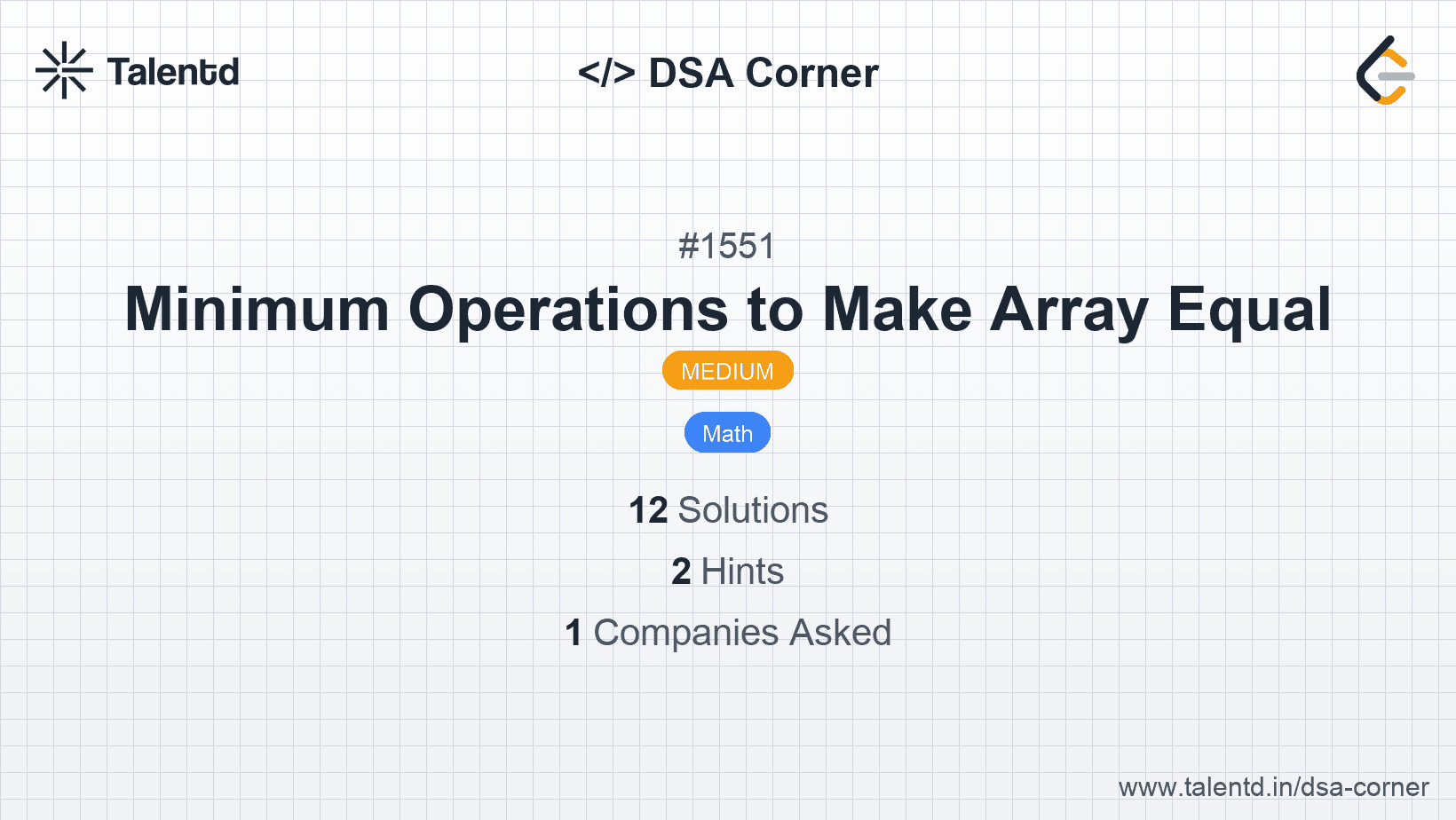
Sponsored
Sponsored
The array arr follows the pattern (2 * i) + 1, making it an arithmetic sequence of odd numbers. The median of the arithmetic sequence is the middle element for odd n and the average of two middle elements for even n. Since operations have to balance the values to become equal, the number of operations required is essentially the sum of steps needed to make the greater half equal to this median, iterating from the middle outwards.
Time Complexity: O(1), since the solution simply computes a formula.
Space Complexity: O(1), as no additional space is required.
1#include <iostream>
2using namespace std;
3
4int minOperations(int n) {
5 int half = n / 2;
6 return half * (half + (n % 2 == 0));
7}
8
9int main() {
10 cout << minOperations(3) << endl; // Output: 2
11 cout << minOperations(6) << endl; // Output: 9
12 return 0;
13}In this C++ function, half determines the extent of operations required to align the elements towards the median. Using integer division, this provides the required operations count based on the split point of the array.
This approach demonstrates a naive simulation of operations: iteratively balance the array elements by focusing on reducing extreme disparities between elements. This is not intended for efficiency but understanding the process.
Time Complexity: O(n^2), due to nested iterations looking for disparities.
Space Complexity: O(n), to store the array.
1
This C function uses loops to shuffle elements towards the equal division, thereby elucidating logic despite computational inefficiencies.